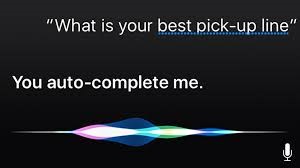We are amidst a major shift in how people interact with computers. Bots have quickly taken over multiple spaces and arenas, for example, legal, medical & diagnosis, therapists, travel, and hospitality, and the list is endless. According to a 2018 Statista report, around 47% of people claim that chatbot responses aren’t helpful. So, where are we going wrong?
Chatbots have become an integral part of the customer support process. Your customers might not think of your chatbot as their friend, but they will interact with it more personally if it is well-equipped to hold a smooth conversation. This is why your chatbots need to have a personality that resonates perfectly with your customers. Here are some tips to help your chatbot deliver a more human-like experience by forging a unique chatbot personality:
Know thy customer
Your chatbot will more likely engage your customers if it mirrors their personality. Understand the personality of your audience, and learn about their interests, hobbies, life experiences, etc. Putting yourself in the shoes of your customers will help you decide how much information, humor, and friendliness should be provided from the start.
For example, if most of your customers are 35-50 year-old professionals, you cannot give your chatbot a teenage-like persona.
An awesome example of this is shown by DOM, the Domino’s Pizza bot, which seasons its greetings with fun: “Hi, I am DOM, the pizza bot. I’m just here for the dough, so let’s get you a pizza, yeah?”
DOM audience is a hungry mob of customers, with the majority somewhere in the age group of 15-40. So DOM can afford to take on a friendly chatbot personality, cook up some humor, and season its responses with wit. On the contrary, a bot supporting a financial action must have a different personality, giving quick, professional, and to-the-point responses. There is no room for entertainment, only for efficient support.
Define the chatbot’s personality traits
Building a rich and detailed personality makes your chatbot more relatable and relevant for your users. Having a chatbot’s personality creates a clear understanding of the chatbot’s goal and how it will communicate. Its personality determines the chatbot’s choice of language, tone, and style. Customer data analysis will help you evaluate client behavior and this, in turn, will help determine the amount of humor, friendliness, tone, and intonation the bot should adopt – as per your clientele.
Always remember that your customers will still assign a personality to your chatbot if it hasn’t been designed explicitly. For example, Siri and Cortana both have a unique personality. They do not have a face, but they do have a name.
In addition to offering an honest, helpful conversation appropriate for your customer, you can also make your bot appear friendlier and approachable.
For example, what is the name of your bot? In some cases, it could be as simple as “ABC Messenger.” You can use a more friendly approach by giving your bot a name like “DOM, the pizza bot,” or one such example is Nagarro’s recently built, in-house chatbot, “Ginger, the dog-bot.”
Ask yourself the following questions:
- Will your chatbot be a woman, man, or gender-neutral?
- How old is the chatbot, and where does she/he live?
- What are your chatbot’s hobbies?
- What traits will the chatbot’s personality include? In this case, consider your brand’s guide or your company’s personality.
While these questions help you amplify your chatbot’s style and personality, don’t overdo or feel pressured to add humor or sarcasm for any customers who don’t long for those traits. A simple and polite robot is the preferred choice for many brands.
Gear up your bot for unrelated questions
Your chatbot will often need to answer unrelated questions asked by your customers. Around 10% of chatbots receive “I love you” or “I hate you” type of messages. Other common messages were on the lines of “thank you,” “thanks,” “you suck,” etc.
Your chatbot should be ready for any type of message. Even if it doesn’t understand something, don’t make it answer every question like a dumb machine. Use this opportunity to create a connection. Humorous and witty sentences will initiate an engaging conversation and will lighten the mood of the user.
Enable your chatbot to handle emojis, stickers, and GIFs. People love to use these, and it will surprise them if your bot responds accordingly. You can also program your bot to tell a joke or two. About 12% of users asked bots to tell them a joke. Tell them one, and after that, bring them back to the original task of your bot.
Chatbots don’t have to be dry or dull. For example, Apple’s Siri is so well-loved because of the way “she” responds to random questions. Planned wit, in response to unusual questions, turned Siri into one of the most loved bots in the digital world.
For example, ask Siri about her best pick-up line, and she’s quick to reply:
“User: Hey Siri, what is your best pick-up line?”
“Siri: You auto-complete me”

Clearly, a lifeless piece of chatbot is a big mistake! It’s a smart world out there, with smart users expecting intelligent responses and resolutions with quick turnaround time.
Your chatbot’s persona should be able to provide your customers with the most pleasant experience so that they remember your brand and look forward to using your site or services again and again.




